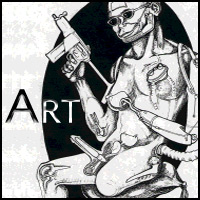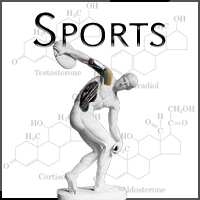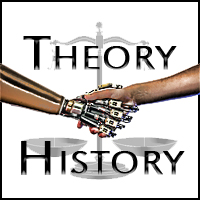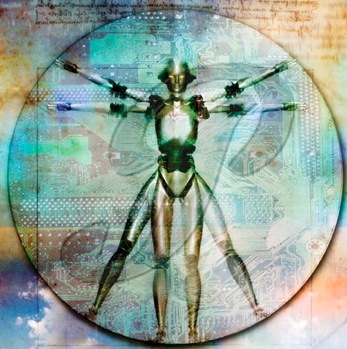
Genetic Engineering and Cybernetics: The Ultimate CombinationKendrick Coburn Genetically modified or mechanically modified. It's a choice soon to be at the front of our ethical dilemmas. Genetic engineering has been utilized for many years and its growing popularity is beginning to greatly affect and alter human lives. Since the beginning of farming, humans have been using selective breeding to harness the power of evolution to produce better products. In the modern generation, there are two new technologies that promise to change the evolutionary path of man. Genetic modification and cybernetics are the new steps toward human evolution. Genetic modification would allow the human race to modify many different aspects of the human psyche and physique. We would be allowed to move through evolution hundreds or even thousands of times faster. On the other hand, machine technology could also provide a similar result, and with time, our cybernetics will be able to compete with genetic modification and be incorporated into our human bodies. The idea behind cyborgization is that many parts will be incorporated with our technology. From human-computer interfaces, to chips implanted in our nervous systems, many of these things will open a new door to the next stage of human development, allowing new modes of communication and challenging the definition of being human. Many different changes will occur in our society because people will be able to acquire more knowledge, be stronger, and live much longer lives. Perception of life will change because of the technologies to extend and make our lives better. The question is not which technology will dominate the other, but how will both of these technologies lead humans to cope with society and the eventual evolution of human beings? By examining the concepts of Transhumanism, literary Sci-Fi fiction, and human enhancement we can attempt to predict how human society will change. The Difference between Genetic enhancement and Genetic modification
Genetic engineering is the development and application of scientific methods, procedures, and technologies that permit direct manipulation of genetic material in order to alter the hereditary traits of a cell, organism, or population. Genetic enhancement and genetic modification both fall under genetic engineering but they do not mean the same thing. Both of these changes are modifying the human body, but the difference is that genetic modification stops when we start to improve or change human characteristics. Genetic enhancement is improving on what humans genetically already have. Genetic enhancing and genetic modifying are separate ideas. While modifying is just making the body do what it is supposed to do (i.e. Pacemakers), genetic enhancing is changing the human genome so that it is better than the original. Genetic Engineering
How does genetic engineering affect our lives? Many aspects of humanity have already begun to change. In recent years, new discoveries in the fields of medicine and human genetics have lead to a new type of reproduction. Humans are now able to fertilize several embryos, then genetically screen them for certain traits or disorders. The parents then pick which of the embryos they prefer and proceed with the normal birth process. This type of reproduction is considered to be genetic engineering and many people prefer using this technique. But at what point does genetic modification change into genetic enhancement and cross an ethical line? Is increasing our intelligence okay? Is adding wings or horns to our species okay? Humans consider genetic engineering okay until humans start altering physical features that stand out. One possible result from genetic enhancement is exemplified in the futuristic, but very plausible, movie Gattica. This movie is about a human who hides his unmodified genetics because everyone around him has been genetically enhanced, and, is therefore considered superior. This type of genetic monitoring will greatly affect the way the world works and eventually lead to discrimination. Cyborg/ Technology
If this is true, then what about cyborgization? Cyborgization may make people look human but a metal arm would change physical features. Cybernetics would also enhance people for a larger range of occupations or lifestyles. Many people who have pacemakers and brain implants that help regulate circuitry are considered cyborgs because of the limited life they would lead without the technology. There are many books that are supposed to represent what is going to happen in the future to the human race. Unfortunately, humans always end up as factions of the genetically altered and the machines. Realistically, humans and machines will become one. The first step is cybernetics. One of the approaches used to create a more intelligent computer is the use of algorithms. The definition of an algorithm “is a type of effective method in which a definite list of well-defined instructions for completing a task, when given an initial state, will proceed through a well-defined series of successive states, eventually terminating in an end-state.” A genetic algorithm (GA) is a search technique used in computing to find exact or approximate solutions to optimization and search problems that use techniques inspired by evolutionary biology such as inheritance, mutation, selection, and crossover. This sort of computer behavior leads experts to lean toward a more integrated future of genetics and machinery. Recently a new type of computer circuit was created that stamps silicon circuits onto plastic. John A. Rogers, a material science and chemistry professor from UIUC explained that, “some of the plastic circuits can reach speeds matching those of silicon chips” (Jones). Plastic chips could provide for less expensive computers with equal or better processing power. In addition, Rogers wants to make these plastic chips stretch and put them over spheres to simulate the human eye. These sorts of technologies could help lead to AI based off of human ideas of evolution and learning through sight and computer programs. These machine parts would be similar to human parts, allowing cyborgization to become part of human culture. Science Fiction
The novel Schismatrix Plus by Bruce Sterling imagines a solar system where the human race is several hundred years in the future. The reader looks through the eyes of a younger gentlemen that has been genetically modified and genetically enhanced. As he explores our solar system's planets, politics, and morals, he is confronted many times by the upper machinist class and other political forces which control the different human worlds. The humans in his world are completely different from the humans of today. The world he describes is in chaos and turmoil. It is ruled by cartels and black-market organizations. People with money prefer to have prosthesis rather than genetically modify themselves. These new humans explore themselves through different mediums such as drugs and computer programs. A large part of their world is separated into the genetically modified, and the robotically modified. His novel is extremely insightful as to the future of our human race. Many of his ideas seem possible and plausible. A major part in his books that highlights our future is the mechanical humans vs. genetic humans. The recurring thought that machines will eventually overrun the human race does not seem to be present within this book. A more prominent motif is the idea of transhumanism and post humanism. Sterling weaves an intricate story where every character is not quite human, yet the reader can identify with the characters on an emotional and humanistic level. Transhumanism and Post-humanism
Genetic engineering and cyborgization are at the heart of Transhumanism and post humanism. Transhumanism is an international, intellectual and cultural movement supporting the use of new sciences and technologies to enhance human mental and physical abilities and aptitudes, and modernize what it regards as undesirable and unnecessary aspects of the human condition, such as stupidity, suffering, disease, aging and involuntary death. Post-humans are when basic capacities so radically exceed those of present humans as to be no longer unambiguously human by our current standards. A post human was once a human, either in its lifetime or in the lifetimes of some or all of its direct ancestors. The prerequisite for a post human is a transhuman and the prerequisite for a transhuman is human. The point at which the human being begins surpassing today's limitations, but is still recognizable as a human person or something similar is considered being transhuman. Transhumans are essentially genetically enhanced and/or modified humans. These people can have mechanical implants or completely transcend their human body.
These two concepts are critical to the advancement of humans. Both of these concepts are the possibilities of what genetic and cyborgization can do for the human race. To put the ideas of Post-humanism and Transhumanism into perspective we recall the past events of the Aztecs and the Spaniards. There are documents from when the Spaniards visited Mexico and all the inhabitants thought that they were gods because they rode horses. Since they had never seen horses or imagined the concept of riding them, the Indians thought that these people were one creature. How would someone explain what a horse was and what riding a horse was? This concept is the basis of post humanism. Post humans will be the evolution of human years from now that would have a consciousness so different from today's standards that we could not understand them. Just like the Aztecs not comprehending horses, humans of today will not be able to understand post human concepts. These are the basis of Transhumanism and post humanism. Both genetic engineering and cyborgization are part of this movement. Where will our next generations be with the promise of new technology? The future of the human race depends on whether or not we decide to use these sciences. Computers will open a new type of human consciousness while genetic engineering could create the perfect human or a new human altogether. Several determining factors that are making a large difference are the people who believe in transhumanist ideals. Work Cited
Anderson, Jennifer. "An Exoskeleton: MIT Researchers Announce Breakthrough in Lightening the Load." Ergonomics Today (2007). Feb. 2008 |











